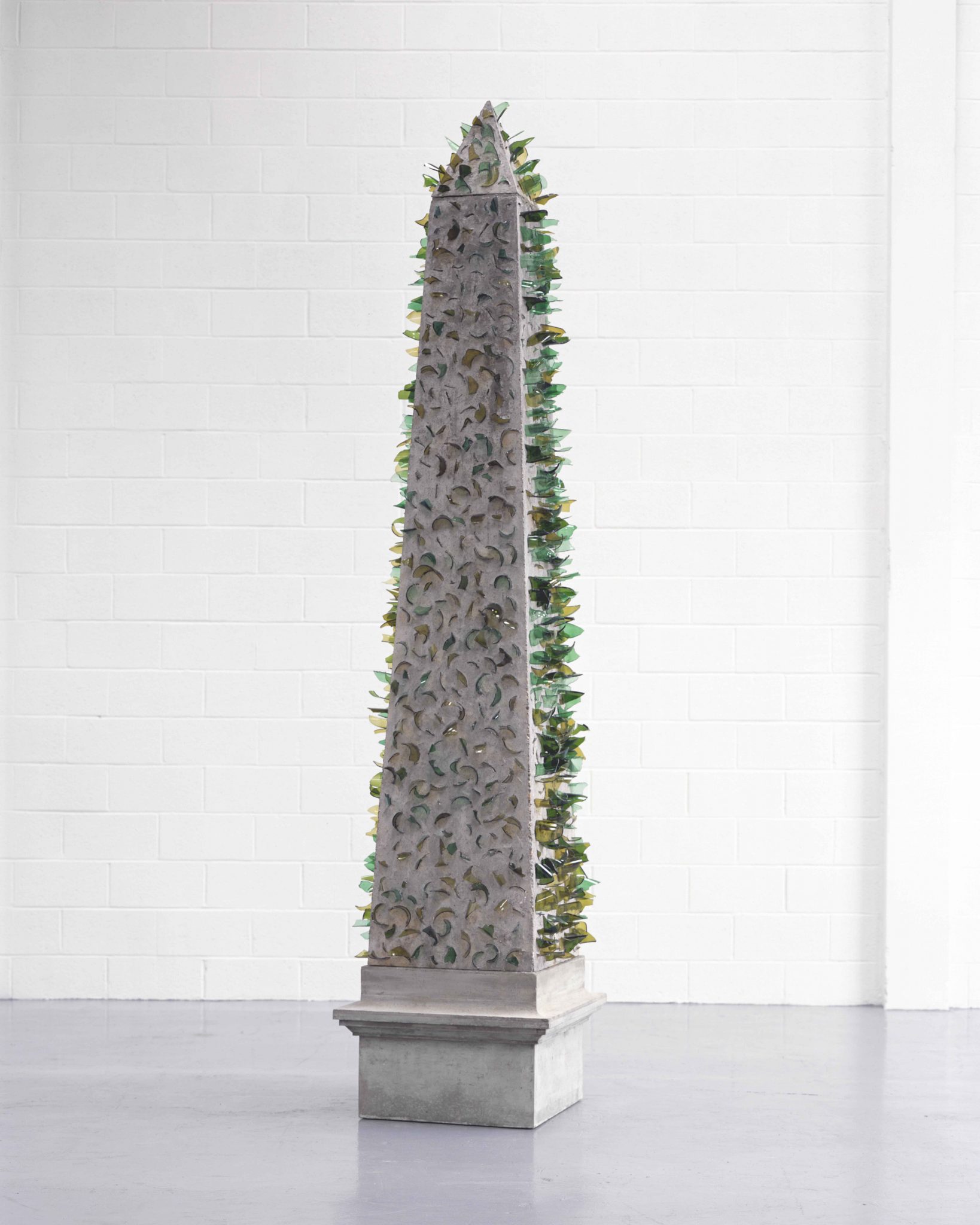Kendell Geers’s midcareer retrospective, a show that lays it on thick with a heady mix of politics, violence, identity and materiality, is conceptually and physically divided into two 12-year-spinning parts. The first, ‘Politics’, spans 1988–2000, when Geers, a white Afrikaner from Johannesburg, first gained a reputation as a provocateur for his antiapartheid art. The second, ‘Poetry’, dates from his relocation to Belgium in 2000 until the present. The oldest inclusions are highly provocative and often activist: in the stairwell leading to three large halls in the northwestern upper storey is, among other works, Portrait of the Artist as a Young Man (1993), depicting Geers wearing a rubber Nelson Mandela mask. Once upstairs, viewers are confronted with barricades:
first a fence in one of Geers’s signature materials, razor wire; then Hanging Piece (1993), a multitude of bricks suspended from the ceiling. (Under apartheid, townshippers hung bricks from highway overpasses to ruin cars passing below.) Wreaths, like TW Batons (Spiral) (1994), are made of police clubs. Everything in the first section of the exhibition – conceived by Geers and Haus der Kunst’s newish director, Okwui Enwezor, curated by Clive Kellner and spanning diverse media – is confrontational.
Yet the simplest works are the most powerful: Geers’s Self Portrait (1995), for example, a statement on his struggles with identity in the form of a Heineken bottle’s broken-off neck, its label reading ‘imported from Holland’; or Brick (1988), a simple red brick on the floor, a heartbreaking newspaper story affixed to its side. In the next hall, PostPunkPaganPop (2008), a full- room installation whose cathedrallike construction is essentially a labyrinth in razor wire on a mirrored Plexiglas floor, conceptually connects the first part of the show to the second. It’s as if Kellner is intentionally walking us through Geers’s process – the artist still struggling with danger and restrictions, yet yearning for a spiritual clarity and purity.
In 2000, Geers took a year off from making art and developed a new creative direction that he calls ‘EuroAnimism’. The subsequent spaces are filled with works offering far more abstraction, higher production values (even if treacherously sharp green-glass shards and nails often stick out of plaster sculptures) and an increased focus on language. Oversize words printed in mirror- image, like ‘believe’, become graphic wall pieces; a photograph of Geers’s face painted black and white shows the word ‘fuck’ in bold letters, reading forward and backward (Fuckface (Kendell Geers), 2007). In the installation Terrorealismus (2003), flickering neon lights read ‘Terror-Error’, ‘Border-Order’ and ‘Danger-Anger’.
A prominent South African curator and old friend of Geers’s and Enwezor’s, Kellner has managed to make the complexities of Geers’s passionate energies and often disparate ideas remarkably accessible. Yet one gets the feeling in the show’s later phases that, without a direct thing to fight against, Geers loses something. His old struggles were against apartheid; the newer struggles appear to be against broad-sweeping issues like capitalism and its soullessness. While many of the later works indeed possess a poetry (Country of My Skull, 2010, a painted skull, is particularly haunting, as are the handcuffed, praying hands of PrayPlayPreyPay, 2011), the elements that are meant to be provocative – like the word ‘fuck’, which Geers uses often – have become so omnipresent in modern culture that their artistic impact is alas diffused. Long ago Geers said that ‘the struggle should be a weapon of art’. These days, it seems like everybody’s carrying a weapon.
This article was first published in the May 2013 issue.
